1. The spectroscopy information for an organic molecule is given below.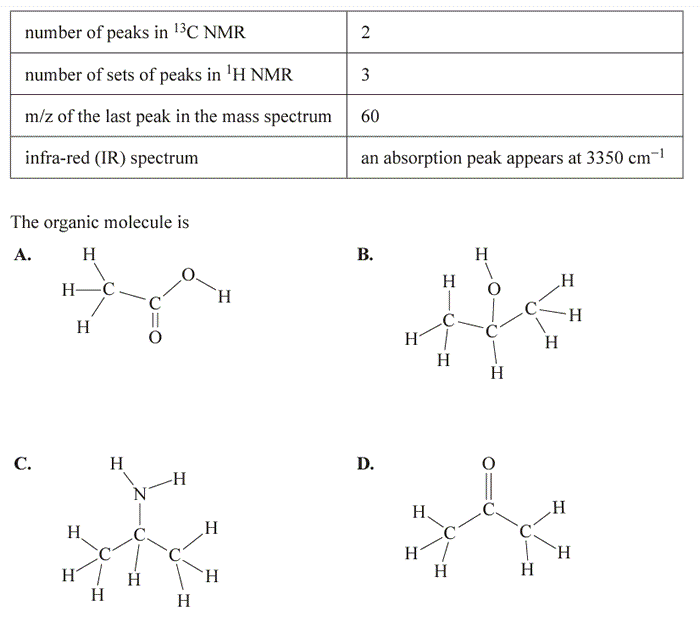
Solution

2. The 1H NMR spectrum of an organic compound has three unique sets of peaks: a single peak, seven peaks (septet) and two peaks (doublet). The compound is
A. 3-methyl butanoic acid.
B. 2-methyl propanoic acid.
C. 2-chloro-2-methylpropane.
D. 1,2-dichloro-2-methylpropane.
Solution

3. Two students are given a homework assignment that involves analysing a set of spectra and identifying an unknown compound. The unknown compound is one of the molecules shown below.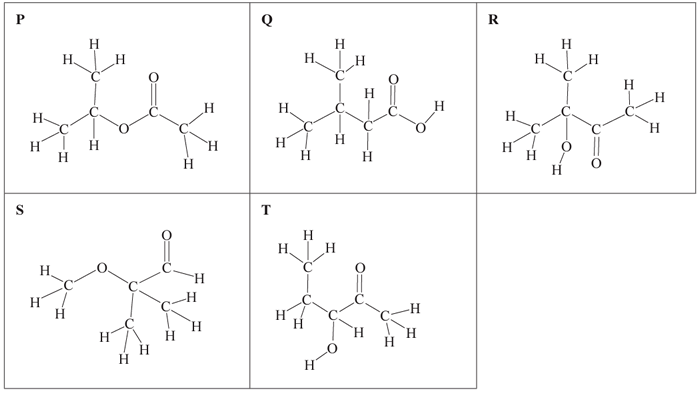
The 13C-NMR of the unknown compound is also shown below
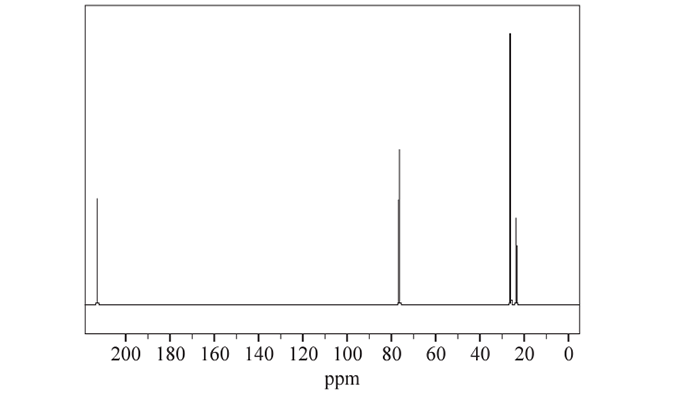
a. Based on the number of peaks in the 13C-NMR spectrum, which compound – P, Q, R, S or T – could be eliminated as the unknown compound?
Solution

b. The infra-red (IR) spectrum of the unknown compound is shown below.
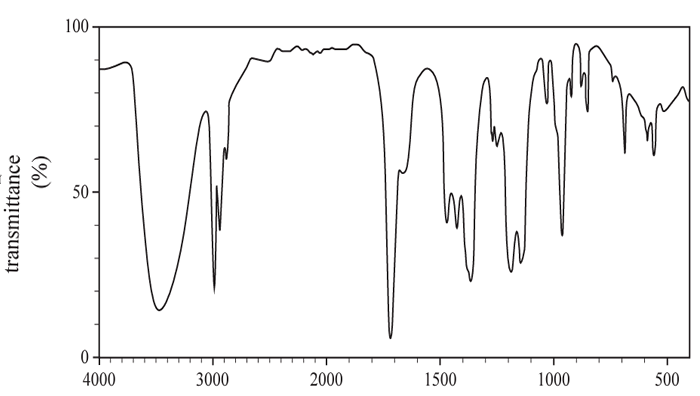
Identify which of the five compounds can be eliminated on the basis of the IR spectrum. Justify your answer using data from the IR spectrum. 3 marks
Solution

c. The mass spectrum of the unknown compound is shown below.
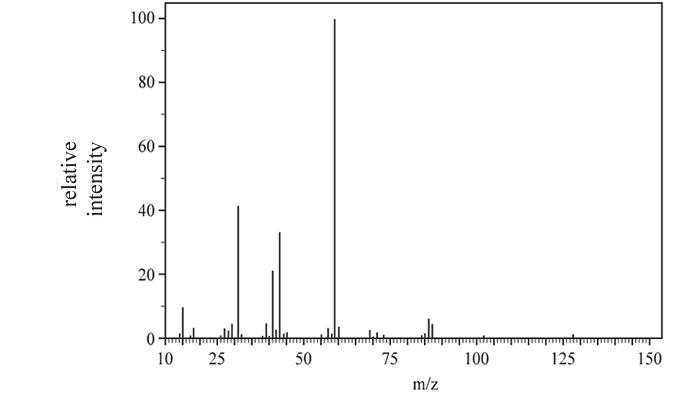
i. Write the chemical formula of the species that produces a peak at m/z = 43.
ii. Define m/z as used in mass spectroscopy.
iii. Explain why one molecule can produce multiple peaks on a mass spectrum.
Solution
4 Which one of the following statements about IR spectroscopy is correct?
A
. IR radiation changes the spin state of electrons.
B. Bond wave number is influenced only by bond strength.
C. An IR spectrum can be used to determine the purity of a sample.
D. In an IR spectrum, high transmittance corresponds to high absorption
Solution
